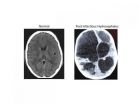Drainage ditches can help clean up field runoff
2013-01-04
(Press-News.org) This press release is available in Spanish.
Vegetated drainage ditches can help capture pesticide and nutrient loads in field runoff, U.S. Department of Agriculture (USDA) scientists report. These ditches—as common in the country as the fields they drain—give farmers a low-cost alternative for managing agricultural pollutants and protecting natural resources.
Agricultural Research Service (ARS) ecologist Matt Moore at the agency's National Sedimentation Laboratory in Oxford, Miss., and his colleagues conducted the research. ARS is USDA's chief intramural scientific research agency.
Until recently, the primary function of many edge-of-field ditches was to provide a passage for channeling excess water from crop fields. Many farmers controlled ditch vegetation with trimming or dredging to eliminate plant barriers that could impede the flow of runoff.
But in one of Moore's first studies, he evaluated the transport and capture of the herbicide atrazine and the insecticide lambda-cyhalothrin for 28 days in a 160-foot section of a vegetated agricultural drainage ditch in Mississippi. One hour after he started a simulated runoff event, 61 percent of the atrazine and 87 percent of the lambda-cyhalothrin had transferred from the water to the ditch vegetation. At the end of the ditch, runoff pesticide concentrations had decreased to levels that were generally non-toxic to downstream aquatic fauna.
Moore also conducted work in California and determined that vegetated drainage ditches helped mitigate pesticide runoff from tomato and alfalfa fields. As a result, USDA's Natural Resources Conservation Service (NRCS) state office in California included vegetated agricultural drainage in their Environmental Quality Incentives Program (EQIP). This meant farmers who installed the ditches could be reimbursed for up to 50 percent of the cost. Moore's research also contributed to the decision by NRCS managers in Mississippi to include vegetated agricultural drainage ditches in the state's EQIP.
###
Read more about Moore's studies in the January 2013 issue of Agricultural Research magazine.
USDA is an equal opportunity provider and employer. To file a complaint of discrimination, write: USDA, Office of the Assistant Secretary for Civil Rights, Office of Adjudication, 1400 Independence Ave., SW, Washington, DC 20250-9410 or call 866-632-9992 (Toll-free Customer Service), 800-877-8339 (Local or Federal relay), 866-377-8642 (Relay voice users).
ELSE PRESS RELEASES FROM THIS DATE:
2013-01-04
This press release is available in German.
What is normal to most people in winter has so far been impossible in physics: a minus temperature. On the Celsius scale minus temperatures are only surprising in summer. On the absolute temperature scale, which is used by physicists and is also called the Kelvin scale, it is not possible to go below zero – at least not in the sense of getting colder than zero kelvin. According to the physical meaning of temperature, the temperature of a gas is determined by the chaotic movement of its particles – the colder the gas, the slower ...
2013-01-04
New research from Western University provides brain imaging evidence that students well-versed in very basic single digit arithmetic (5+2=7 or 7-3=4) are better equipped to score higher on the Preliminary Scholastic Aptitude Test (PSAT), an examination sat by millions of students in the United States each year in preparation for college admission tests.
In findings published today in The Journal of Neuroscience research led by Daniel Ansari, Associate Professor in Western's Department of Psychology and a principal investigator at the Brain and Mind Institute, showed by ...
2013-01-04
The U.S. Defense Advanced Research Projects Agency (DARPA) recently selected Southwest Research Institute to provide the flight low-rate crosslink wireless communications platform for the System F6 Program.
The System F6 Program, which is envisioned to culminate in an on-orbit demonstration in 2015–2016, is designed to validate a new space mission concept in which a cluster of smaller, wirelessly connected spacecraft replaces the typical single spacecraft carrying numerous instruments and payloads. This "fractionated" architecture enhances survivability, responsiveness ...
2013-01-04
BOSTON – Genomic research is widely expected to transform medicine, but progress has been slower than expected. While critics argue that the genomics "promise" has been broken – and that money might be better spent elsewhere -- proponents say the deliberate pace underscores the complexity of the relationship between medicine and disease and, indeed, argues for more funding.
But thus far, these competing narratives have been based mostly on anecdotes. Ramy Arnaout, MD, DPhil, a founding member of the Genomic Medicine Initiative at Beth Israel Deaconess Medical Center (BIDMC), ...
2013-01-04
UNIVERSITY PARK, Pa. -- The amount of rainfall affects the number of infant infections leading to hydrocephalus in Uganda, according to a team of researchers who are the first to demonstrate that these brain infections are linked to climate.
Hydrocephalus -- literally "water on the brain" -- is characterized by the build-up of the fluid that is normally within and surrounding the brain, leading to brain swelling. The swelling will cause brain damage or death if not treated. Even if treated, there is only a one-third chance of a child maintaining a normal life after post-infectious ...
2013-01-04
UNIVERSITY PARK, Pa. -- Norfolk Southern Railway No. 999 is the first all-electric, battery-powered locomotive in the United States. But when one of the thousand lead-acid batteries that power it dies, the locomotive shuts down. To combat this problem, a team of Penn State researchers is developing more cost-effective ways to prolong battery life.
The experimental locomotive's batteries, just like automotive batteries, are rechargeable until they eventually die. A leading cause of damage and death in lead-acid batteries is sulfation, a degradation of the battery caused ...
2013-01-04
UNIVERSITY PARK, Pa. -- Experience working for a particular hospital matters when it comes to the performance of radiologists who work for outsourcing teleradiology companies, according to a team of researchers, whose finding could have important implications, given the growing use of telemedicine.
"More than half of all hospitals now use teleradiology services," said Jonathan Clark, assistant professor of health policy and administration, Penn State. "Hospitals send their X-rays, CT scans, MRIs and other images to outsourcing companies who then forward the images to ...
2013-01-04
SAN DIEGO – Genetic sequencing technology is altering the way cancer is diagnosed and treated, but traditional specimen handling methods threaten to slow that progress.
That's the message delivered this week in a column appearing in the Journal of the American Medical Association (JAMA) by Scripps Clinic physicians Eric Topol, Kelly Bethel and Laura Goetz.
Dr. Topol is a cardiologist who serves as chief academic officer of Scripps Health and director of the Scripps Translational Science Institute (STSI), leading Scripps' genomic medicine research efforts. Dr. Bethel ...
2013-01-04
CAMBRIDGE, MA -- Many industrial plants depend on water vapor condensing on metal plates: In power plants, the resulting water is then returned to a boiler to be vaporized again; in desalination plants, it yields a supply of clean water. The efficiency of such plants depends crucially on how easily droplets of water can form on these metal plates, or condensers, and how easily they fall away, leaving room for more droplets to form.
The key to improving the efficiency of such plants is to increase the condensers' heat-transfer coefficient — a measure of how readily heat ...
2013-01-04
Using brain scans of children and adults watching Sesame Street, cognitive scientists are learning how children's brains change as they develop intellectual abilities like reading and math.
The novel use of brain imaging during everyday activities like watching TV, say the scientists, opens the door to studying other thought processes in naturalistic settings and may one day help to diagnose and treat learning disabilities.
Scientists are just beginning to use brain imaging to understand how humans process thought during real-life experiences. For example, researchers ...
LAST 30 PRESS RELEASES:
[Press-News.org] Drainage ditches can help clean up field runoff



